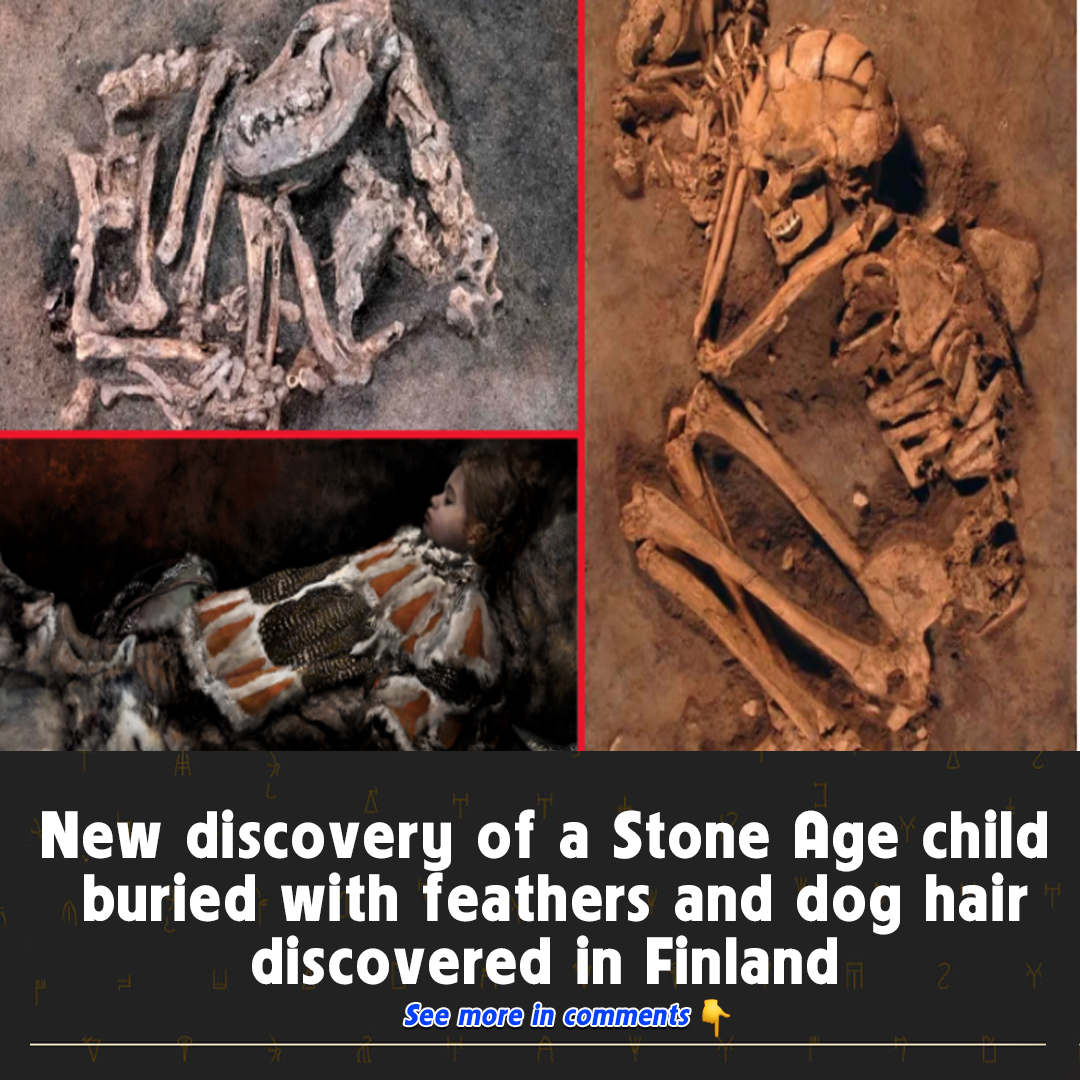The hair of the dog couldn’t save this kid.
Buried beneath a gravel road in a Finnish forest, archaeologists have discovered tooth fragments belonging to a child that lived some 6,000 years ago in the Mesolithic period. And while none of the youngster’s bones survived the intervening millennia, a few animal furs and bird feathers were retrieved from the grave, providing some fascinating insights into the funerary customs of ancient Nordic communities.
Researchers were first alerted to the existence of the grave after noticing a patch of red ochre on the ground. Commonly found in ancient burial sites and rock art worldwide, red ochre is an iron-rich clay soil that has played a role in ceremonial activities throughout human history.
Unfortunately, however, human remains rarely survive for long in Finland’s highly acidic soil, which makes it very difficult to study funerary deposits. With no expectations of finding a skeleton, therefore, the team searched the grave for microparticles and were pleasantly surprised with what they found.
Regarding the pit’s primary inhabitant, the study authors explain that “only some unburned human enamel fragments remained of the deceased. Based on these teeth, the deceased was a child, less than 10.5 years old.”
And while it was not possible to perform radiocarbon dating on the leftover dentures, the researchers were able to hypothesize the age of the grave based on the stone artifacts that were buried alongside the child. Specifically, they found two quartz arrowheads that were consistent with the material culture of the Mesolithic.
The burial site, known as Majoonsuo, also contained microscopic fragments of bird feathers. Seven of these feathers were identified as the down of a waterfowl, suggesting that the child may have worn a down coat or been buried on a down bed.
A single falcon feather barbule was also retrieved, most likely originating from the fletching attached to the quartz arrowheads. Alternatively, falcon feathers may have been used to decorate the grave or the deceased child’s clothing.
Finally, the researchers report the discovery of three canine hairs, though they are unable to say whether these came from a dog or a wolf.
“The discovery in Majoonsuo is sensational, even though there is nothing but hairs left of the animal or animals – not even teeth. We don’t even know whether it’s a dog or a wolf,” said study author Kristiina Mannermaa in a statement. “Dogs buried with the deceased have been found in, for example, Skateholm, a famous burial site in southern Sweden dating back some 7,000 years.”
However, the fact that no canid teeth were found at Majoonsuo suggests that the child was probably buried with just furs rather than a whole animal. These furs may have been used as clothing or grave goods.
Summing up the significance of these findings, Mannermaa explained that “this all gives us a very valuable insight about burial habits in the Stone Age, indicating how people had prepared the child for the journey after death.”
The study has been published in the journal PLOS ONE.
